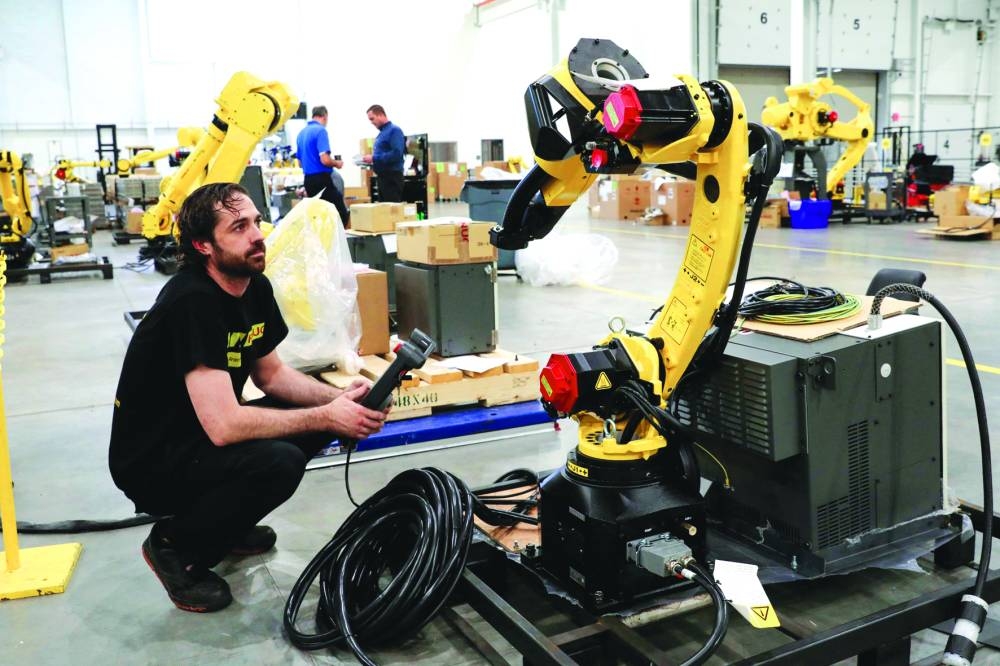In the wake of the Great Recession of 2008-09, practically everyone seemed convinced that China’s economy would surpass that of the US by 2030. Today, China is facing a range of crises that could spell doom for its economic “miracle”. In an effort to get back on track – and strengthen its strategic position – China has lately been seeking to position advanced industries, rather than real estate, as the economy’s main growth engine. How the US responds will help determine the outcome of the two countries’ strategic competition – and the future of the global economy.
America’s economic dynamism remains robust, as the rapid recovery from the Covid-19 shock showed. One of the many factors underpinning this dynamism is US leadership in artificial intelligence, which is already creating economic value across industries and shows promising signs of boosting productivity. With US technology companies investing heavily in cloud infrastructure, the US innovation ecosystem is set to benefit from enterprise-scale AI capabilities. As 2030 approaches, these developments could accelerate innovation in “deep-tech” sectors like robotics and biotechnology.
For all its strengths, however, the US economy has one glaring deficiency: a lack of production capacity in the advanced industries, such as semiconductors and clean energy, that are crucial to America’s economic competitiveness and national security. Since 1980, the share of the world’s high-tech goods that are manufactured in the US has fallen from over 40% to just 18%.
While the US has undergone deindustrialisation, China has emerged as the world’s manufacturing superpower, and moved from dominance in textiles and toys to leadership in advanced-technologies, such as networking components, electrical equipment, and machine tools. China now accounts for more than half of global electric-vehicle production, and through 2026, it will possess more than 80% of the world’s solar-cell manufacturing capacity.
With President Xi Jinping having identified advanced manufacturing industries as the main engines of China’s future economic growth, the Chinese government is boosting its efforts to dominate these industries’ value chains. In a sign of what is to come, Chinese net lending to manufacturing surged from $63bn in 2019 to over $680bn in 2023.
Worryingly, these investments are guided by mercantilist policies designed to entrench China’s dominance over advanced industries by flooding global markets with subsidised exports. If this strategy is allowed to succeed, US firms in advanced industries will be wiped out, leaving the US increasingly dependent on China for critical goods.
But this outcome is hardly a foregone conclusion. Thanks to a rare confluence of factors, America’s goal of reconstituting its industrial base aligns with key strategic objectives and domestic priorities, from defence to decarbonisation to supply-chain diversification. At the same time, the US has access to emerging advanced-manufacturing processes – involving the application of technologies like robotics, AI, and 3D printing – that could considerably strengthen its ability to compete with China. To make the most of these advantages – and as part of a broader vision for competitiveness – the US must implement a techno-industrial strategy with three pillars: production, markets, and people.
Begin with production. To increase its capacity to produce advanced-technology goods at scale, the US must invest in manufacturing-innovation programmes and promote the adoption of advanced technologies by small and medium-size manufacturers (the backbone of the US industrial sector). It must also create incentives for investment in the “smart factories” of the future – facilities that capitalise on US software advantages to lower costs, increase flexibility, and accelerate innovation. More broadly, the US must devise new ways to use targeted infusions of government capital to de-risk private investment in the industrial sector after decades of neglect.
As for markets, the US must ensure that its trade policy secures supply chains for key inputs such as Internet of Things modules, networking components, and industrial robots, and reduces dependence on China for production capacity. To this end, the US should make continued use of tools like tariffs, while negotiating strategic trade agreements with key allies and partners. US President Joe Biden should consider appointing a White House “czar” for economic security, responsible for co-ordinating such economic statecraft.
This brings us to people: a comprehensive techno-industrial strategy must include significant investments in human capital. As it stands, advanced industries in the US face crippling workforce shortages. One recent analysis found that China increased its share of top AI research talent from 11% in 2019 to 28% in 2022, while the share of top AI research talent working in the US dropped from 59% to 42%.
To overcome labour shortages and out-compete China for technical talent now and in the future, the US must ensure that all classrooms are AI-equipped by 2030. It must lower barriers to immigration for high-skilled workers. It must also develop a unified federal approach to the advanced-industry workforce. A good starting point would be to create national workforce frameworks to reflect the evolution of advanced-manufacturing industries, similar to how policymakers have approached cybersecurity workforce development.
The US economy is on a strong footing. But China’s efforts to shift its economic model toward advanced industries threaten to enable it not only to surpass the US economically, but also to gain a powerful strategic advantage. That means an equally powerful US response is necessary. By driving investments toward advanced manufacturing, pursuing a strategic trade policy, and strengthening its workforce, the US can leverage its existing advantages to cement its leadership in the industries of the future. – Project Syndicate
- Liza Tobin, a former China director on the US National Security Council, is Senior Director for Economy at the Special Competitive Studies Project. Addis Goldman is Associate Director for Economy at the Special Competitive Studies Project.

